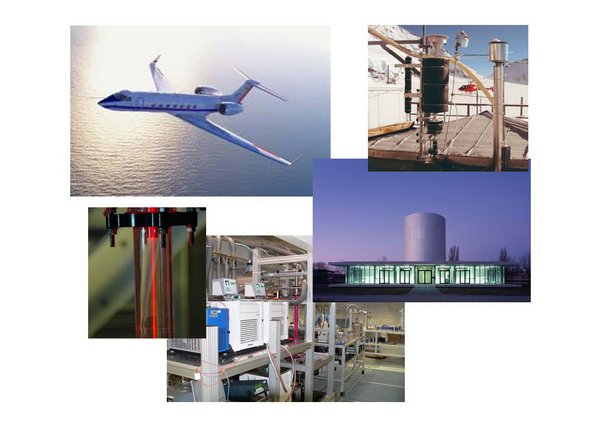
picture in the center on the right side: cloud laboratory (© of the picture: Stefan Müller-Naumann)


picture in the center on the right side: cloud laboratory (© of the picture: Stefan Müller-Naumann)
Heterogeneous ice nucleation, i.e., the formation of ice induced by aerosol particles, is one of the important atmospheric aerosol cloud interaction processes. Aerosol particles inducing ice formation are called ice nuclei (IN). Without these particles, water in the atmosphere would only freeze at temperatures bellows -38°C. As ice formation processes in clouds are highly important for the formation of precipitation at mid-latitudes, without IN there would be no or only small amounts of precipitation in these areas of the earth. Heterogeneous ice formation processes also influence the radiative properties of clouds, and hence may affect climate. Therefore it is important to understand and quantify, how heterogeneous ice formation processes work and how they are influenced by aerosol particles.
Goals of the investigations performed at TROPOS concerning this topic are:
Investigations concerning the topic of heterogeneous ice nucleation comprise both, consideration of ice formation processes in real clouds, and the simulation of ice formation processes under well-controlled laboratory conditions.